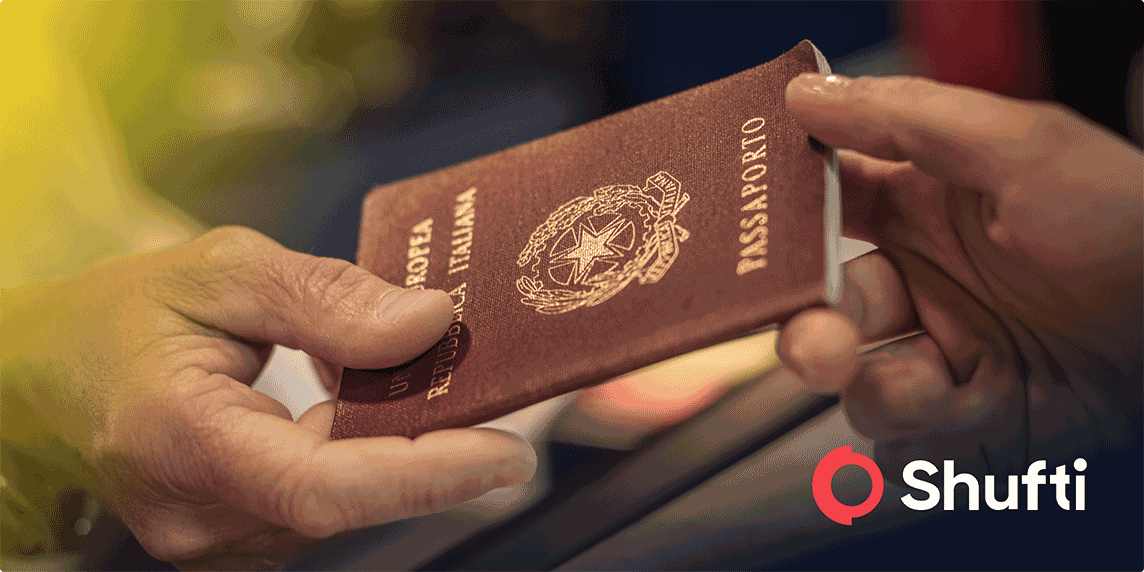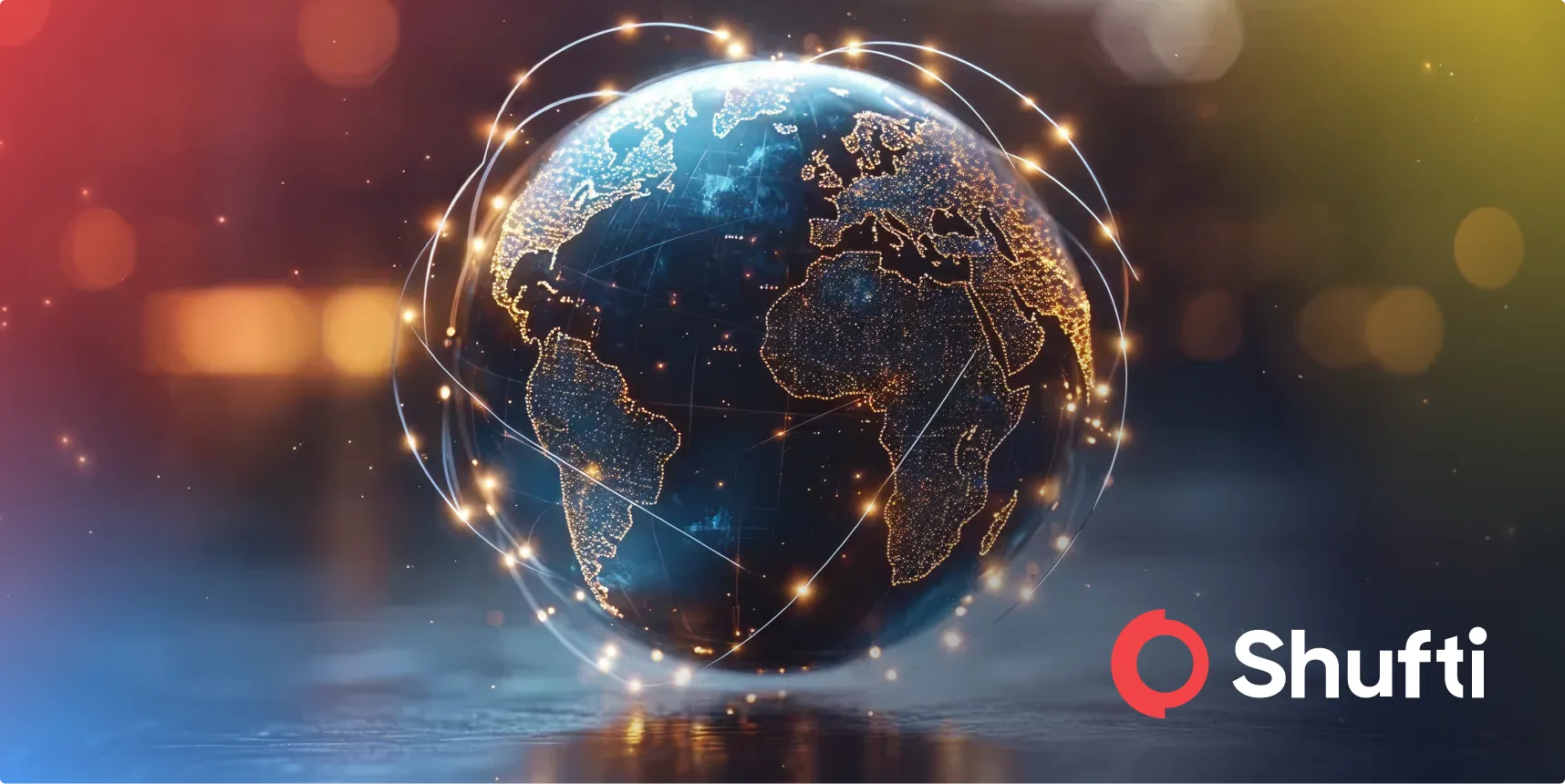The Complete Guide | Identifying Fake Documents

- 01 Common Types of Document Forgery
- 02 Fake vs. Forged Documents: What’s the Difference?
- 03 How to Identify Fake Documents
- 04 How and Why People Fake Documents
- 05 The Growing Demand for Fake Documents
- 06 Why Detecting Fake Documents Matters
- 07 Industries Most Targeted by Fake Document Fraud
- 08 Why Shufti Is The Smart Choice for Document Verification
As digital transformation accelerates, many document application processes have become faster and more convenient for legitimate users and financial criminals alike. While digital platforms have undoubtedly improved accessibility, they have also opened new opportunities for fraudsters using counterfeit documents to exploit businesses.
Between securing unauthorized loans, purchasing or selling assets illegally, and evading arrest, forged documents have become a widespread global threat. The cost to the global economy runs into the billions annually, making reliable document verification essential for all financial institutions, fintechs, insurers, and more.
Recent reports by the Entrust Cybersecurity Institute indicate that digital document forgeries surged by 244% in 2024 compared to the previous year, and now make up 57% of all document fraud cases, underscoring the urgent need for enhanced digital verification systems.
What is Document Forgery?
Document forgery involves the creation, alteration, or imitation of documents to deceive others. The goal is typically to present fabricated information as genuine, whether it’s to gain access to services, commit fraud, or hide one’s true identity.
Recent data shows that passports remain the most frequently forged documents, followed closely by national ID cards. On the dark web, a forged Maltese passport can sell for around $6,500, while digital scans of U.S. driver’s license can be available for as low as $70, with physical replicas can start around $150. While these prices have increased in the past few years, they do still highlight the ease with which fraudsters can access counterfeit documents when billions of dollars are on the line.
Common Types of Document Forgery
There are several techniques fraudsters can use to falsify documents:
- Freehand Simulation: Imitating signatures, stamps, or writing by hand without mechanical assistance.
- Tracing: Copying elements from genuine documents onto a fake version using carbon paper or backlighting.
- Digital manipulations: Using image-editing software to alter or create fake documents, including adjusting text fields, logos, and photographs. These are now the most common methods due to the rise of AI and digital design tools.
The sophistication of these methods continues to increase, making manual detection far more difficult without technology support.
Fake vs. Forged Documents: What’s the Difference?
Fake documents are entirely fabricated documents and not issued by a legitimate authority, for example, a fictitious driver’s license or social security card. These can become incredibly hard to detect if the forger is skilled and are able to replicate seals, figures, or other additional indicators.
Forged documents are genuine but are altered with false information. This can include changing a name, date of birth, or photo on an official ID. They are often harder to spot without advanced tools, as the underlying document is real but deceptively modified.
While fake documents are often easier to spot due to missing security features, forged documents can be much harder to detect without professional verification tools.
How to Identify Fake Documents
Businesses and financial institutions should implement systematic checks to detect document fraud. Key red flags include:
Missing or Incorrect Numbers
It is common for fraudsters to change values on financial documents without ensuring that totals or transaction histories add up. It is crucial to verify that the numbers in the document add up correctly and are consistent.
Data Entry Errors
Misspelled names, grammatical errors, or incorrect punctuation on official documents are always strong indicators of forgery.
Layout or Font Changes
Inconsistent font sizes, mismatched layouts, or improper formatting often signal document tampering, especially on IDs and bank statements.
Logo Inconsistencies
Variations in the issuing authority’s logo, watermark positioning, or seal details are often telltale signs that a document is fake.
Modern fraudsters utilize increasingly sophisticated methods, so spotting these false elements manually can be challenging and make the use of AI more important than ever.
How and Why People Fake Documents
Counterfeit documents are used globally for a wide variety of purposes, including:
- Illegal immigration: Forged passports and visas allow individuals to enter or remain in countries in violation of local immigration laws.
- Financial fraud: Fake bank statements, credit histories, and pay slips are often used to secure loans and lines of credit under assumed identities.
- Identity theft: Fraudsters may use manipulated IDs to impersonate others and access restricted services.
Countries with strong passport privileges, such as Malta, Germany, Australia, and others, are prime targets for document fraud, not because they are inexpensive or easy to forge, but because they offer significant travel and immigration advantages. Maltese passport forgeries are among the most expensive on the dark web due to the fact that they grant visa-free access to the EU and Schengen Zone, reflecting their significant value while traveling. On the other hand, documents from countries with weaker verification standards or less sophisticated security features remain more vulnerable to low-cost forgery attempts.
The Growing Demand for Fake Documents
The demand for counterfeit documents often mirrors global labor migration patterns. Ahead of the 2022 FIFA World Cup, demand surged for work visas in Gulf countries like Qatar and the UAE, driving a rise in document fraud among laborers from India, Bangladesh, and Nepal.
Similarly, financial hubs such as London, New York City, and Dubai are hotspots for fraudulent identity documents used to launder money or commit investment fraud.
Why Detecting Fake Documents Matters
The risks associated with fake documents go far beyond financial loss. Reliable document verification helps businesses:
- Financial Loss Prevention: Prevent fraudulent transactions, unauthorized loans, and insurance scams.
- Data Security: Stop criminals from gaining unauthorized access to private systems and sensitive information.
- Customer Trust: Protect brand reputation by ensuring that only legitimate users are onboarded.
- Legal Compliance: Avoid penalties and legal actions by adhering to KYC (Know Your Customer) and AML (Anti-Money Laundering) regulations.
Failing to detect fraudulent documents can lead to significant operational, reputational, and regulatory consequences.
Industries Most Targeted by Fake Document Fraud
While border control agencies remain common targets for identity fraud, industries like banking, fintech, and insurance are increasingly in the crosshairs. Unlike trained border control agents, who routinely handle a wide variety of global ID documents, frontline staff in banks or telecom centers often only deal with local IDs, which makes it much easier for fraudsters to slip through undetected.
A forged Australian passport, for example, might be flagged immediately at an international airport in Singapore but could go completely unnoticed at a regional bank branch a kilometer away. The same vulnerability exists across sectors not bound by strict KYC compliance, such as healthcare and education. These industries might not view document fraud as a serious concern, until they become targets themselves
Fraudsters tend to exploit these gaps, targeting unprepared industries and overworked customer-facing teams that lack the tools or training to recognize high-quality forgeries.
Why Shufti Is The Smart Choice for Document Verification
At Shufti, we employ advanced AI-powered document verification technology to detect forged or counterfeit documents in seconds (far beyond the capabilities of manual reviews). Our system combines Optical Character Recognition (OCR), biometric matching, and global template validation to identify even the smallest signs of tampering. With support for over 10,000 document types from 240+ countries and territories, we provide true global coverage. By automating the verification process, businesses can reduce human error, ensure compliance, and protect themselves from costly penalties, fraud attempts, and reputational damage, all while delivering a faster, safer onboarding experience.










